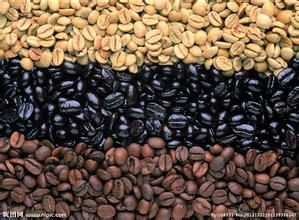Flavor characteristics of Nicaraguan coffee beans introduction to the producing areas of taste grinding scale varieties
Flavor characteristics of Nicaraguan coffee beans introduction to the producing areas of taste grinding scale varieties
According to the measurement, compared with the same kind of coffee beans, the higher the altitude, the greater the acidity, the lower the concentration; on the contrary, the smaller the acidity, the higher the concentration, so high altitude coffee is very suitable for those who like sour taste and low concentration. It's your good coffee. For those who do not like the sour taste and require a high concentration of coffee, the higher the altitude, the less suitable the coffee is, no matter how high its quality is, it is also a waste product for yourself, so the choice of altitude should be determined according to the personal taste.
Madriz is an ecological coffee with a very hard shell. In the pure natural planting environment, it uses more complex operations to maintain the delicate aroma and taste of the coffee; it is produced in northern Nicaragua between Matagalpa and Jinotega, with an average annual rainfall of 1500-1700mm and a temperature of 20-29 degrees Celsius. All the coffee is selected manually, and the labor and time cost is much higher than that of ordinary beans.
High-quality Nicaraguan coffee, grown in the north and middle of the country. Coffee is a pillar industry in Nicaragua, producing nearly 100,000 tons of coffee beans every year. Many people who have tasted Nicaraguan coffee usually think that it is no different from Salvadoran coffee or Honduran coffee. It is full-bodied, smooth and delicate, with a slightly bitter finish, like a faint taste in a wine.
In many countries, coffee production will be seriously affected for political reasons. Nicaraguan coffee industry is no exception. The 1979 revolution forced coffee planters to flee to Miami. A period of indecision followed, when the government considered whether to redistribute the land (its
Including many plantations), which led to a shortage of coffee and a decline in production, from more than 1 million bags in the early 1970s to less than 600000 bags in 1990. Now the Government has opened up the coffee industry and private owners have taken control of the market. The coffee is produced in Sinotega and New Segovia in Matagalpa. It has moderate acidity, delicious aroma and is very lovely.

Important Notice :
前街咖啡 FrontStreet Coffee has moved to new addredd:
FrontStreet Coffee Address: 315,Donghua East Road,GuangZhou
Tel:020 38364473
- Prev

Flavor description of Yega Shefi Woka Coffee Taste treatment Grinding scale Variety introduction
The coffee trees of Yegashefi were cultivated by European monks (a bit like Belgian monks growing wheat for beer) and later by farmers or cooperatives. Yerga Shefi is actually constructed from surrounding coffee communities or cooperatives, including Iddo Idid near Misty Valley.
- Next

Guatemala Inchter Estate Coffee Bean Varieties Growing Environment Flavor Description Taste Introduction
Guatemala Inchter Estate Coffee Bean Variety Growing Environment Flavor Description Taste Introduction Vivetnam fruit growing area is located in the northwest highlands of Guatemala, planting altitude of 1800-2100 meters, is the country's highest coffee growing area, known for producing excellent quality beans. Due to the numerous rivers and lakes in Guatemala, the Vivitenango region is rich in mountains and water resources and has a dry climate
Related
- Detailed explanation of Jadeite planting Land in Panamanian Jadeite Manor introduction to the grading system of Jadeite competitive bidding, Red bid, Green bid and Rose Summer
- Story of Coffee planting in Brenka region of Costa Rica Stonehenge Manor anaerobic heavy honey treatment of flavor mouth
- What's on the barrel of Blue Mountain Coffee beans?
- Can American coffee also pull flowers? How to use hot American style to pull out a good-looking pattern?
- Can you make a cold extract with coffee beans? What is the right proportion for cold-extracted coffee formula?
- Indonesian PWN Gold Mandrine Coffee Origin Features Flavor How to Chong? Mandolin coffee is American.
- A brief introduction to the flavor characteristics of Brazilian yellow bourbon coffee beans
- What is the effect of different water quality on the flavor of cold-extracted coffee? What kind of water is best for brewing coffee?
- Why do you think of Rose Summer whenever you mention Panamanian coffee?
- Introduction to the characteristics of authentic blue mountain coffee bean producing areas? What is the CIB Coffee Authority in Jamaica?

